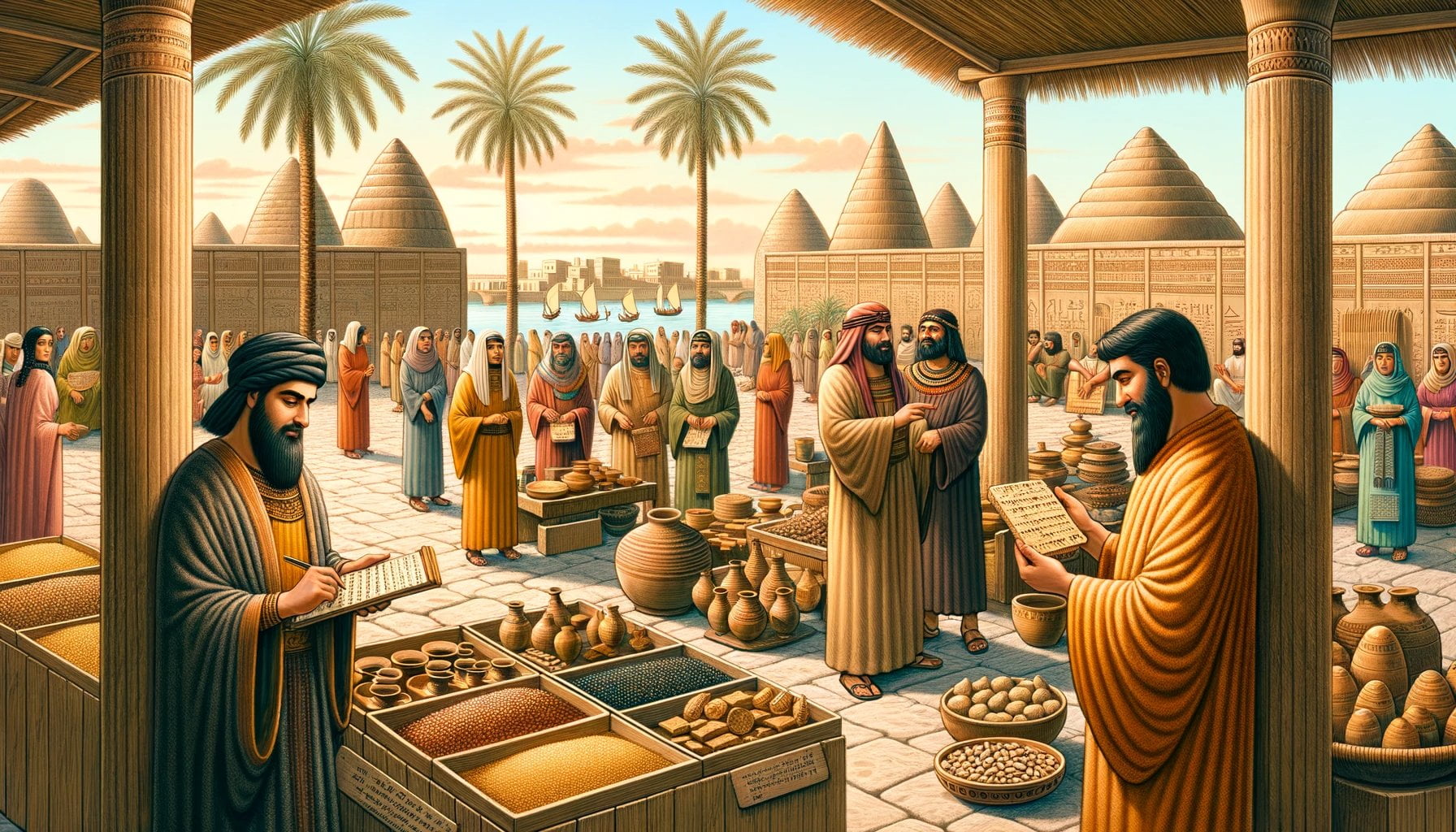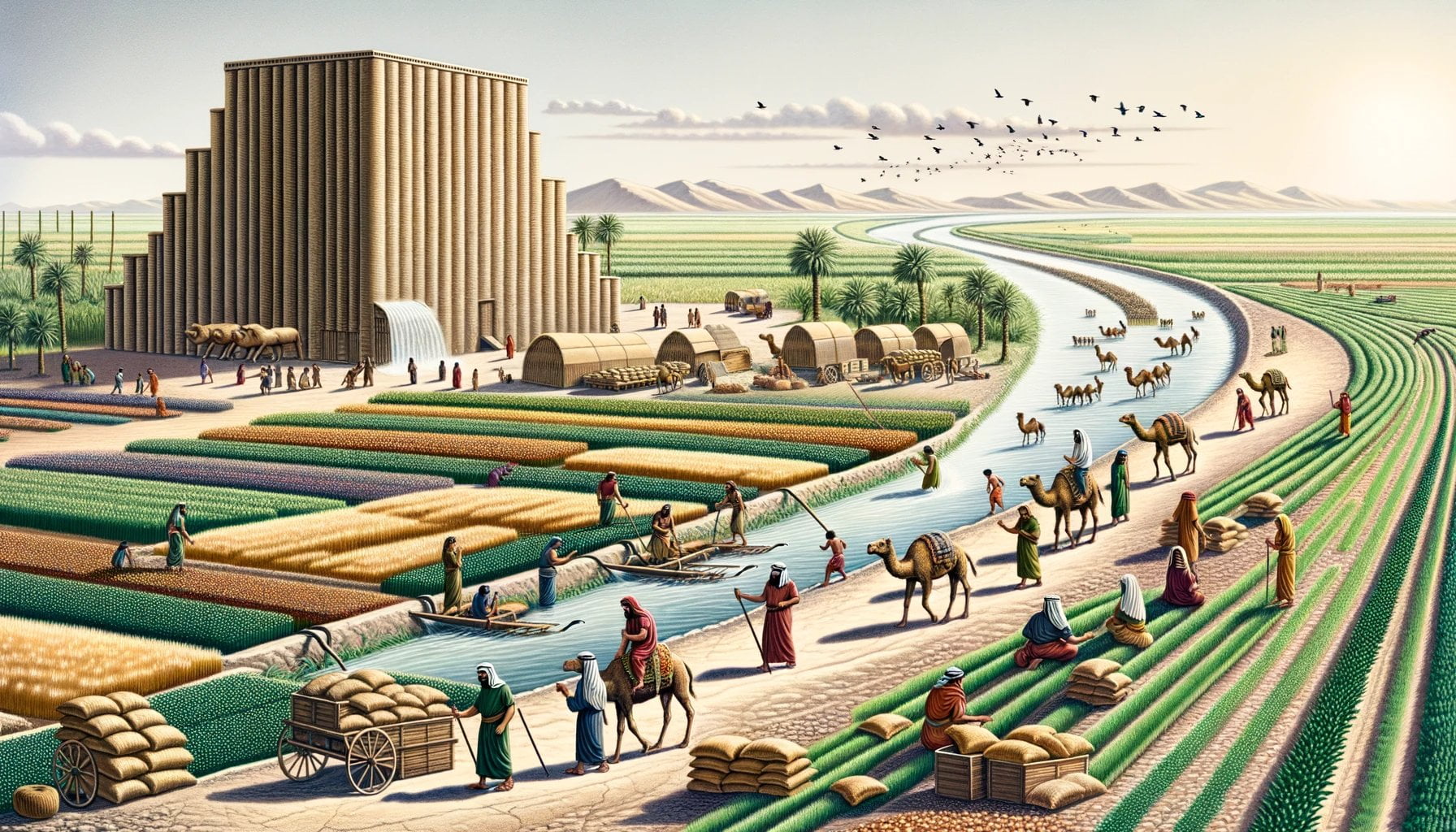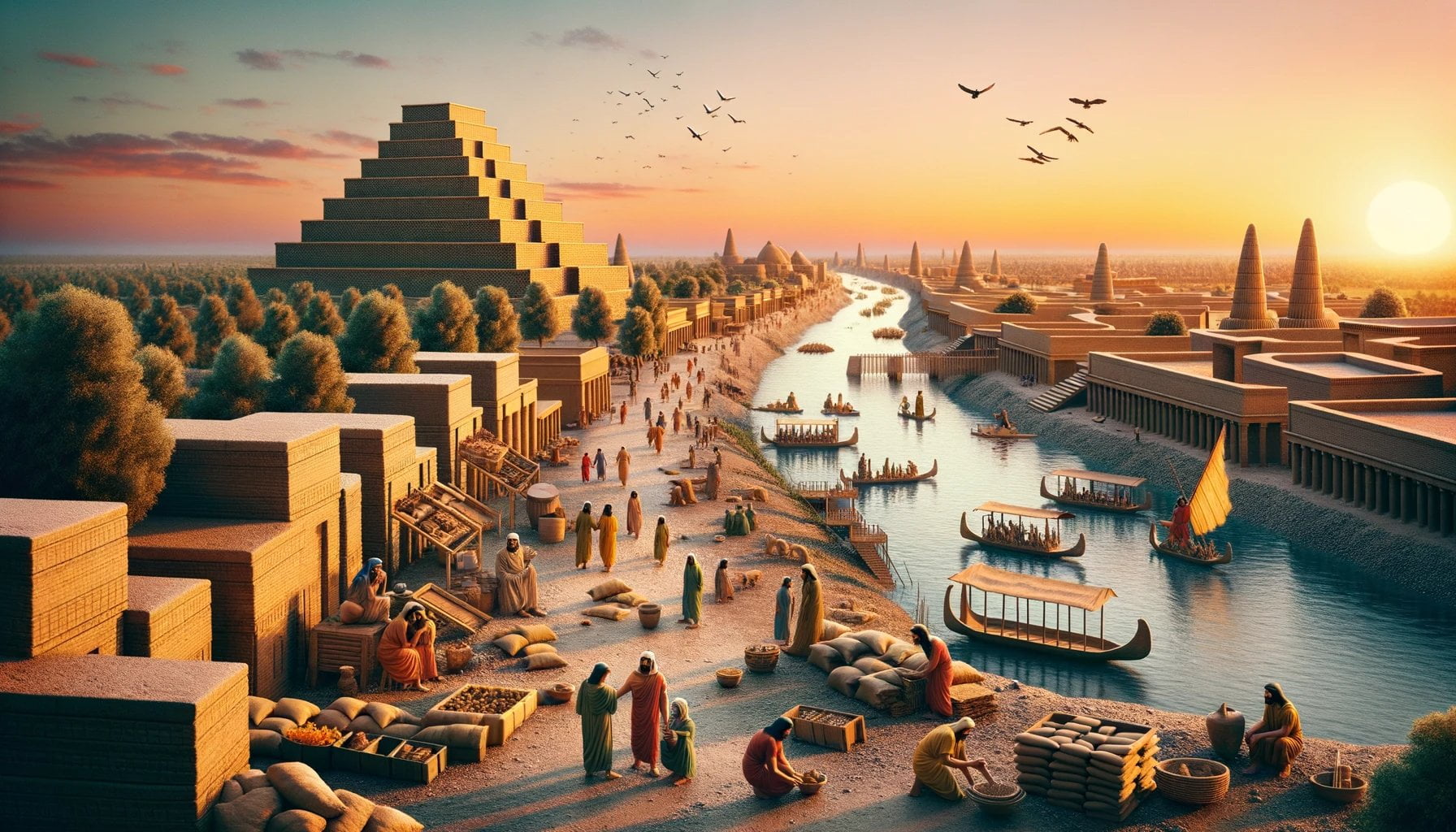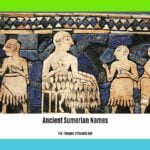In this article, we delve into the captivating realm of ancient Mesopotamian economics and uncover the valuable insights it offers into the birth of economic principles. With a focus on the economic structures, trade practices, and monetary systems of this ancient civilization, we aim to shed light on the foundations that shaped the world of economics as we know it today. Join us on this journey as we explore the fascinating intricacies of Mesopotamian economies and reveal the legacy they left behind.

Key Takeaways:
- The economy of Mesopotamia was centered around agriculture and trade.
- The Sumerian people developed irrigation systems to utilize the abundance of river water.
- Different regions specialized in different agricultural products and goods based on their location.
- Trade in Mesopotamia involved both agricultural and non-agricultural products, and reached distant regions like Denmark, China, and India.
- The Mesopotamian civilization had an advanced accounting system and kept tax records.
- The rivers, Tigris and Euphrates, played a crucial role in the transportation of goods.
- Political and economic relations varied between rulers and the population in Mesopotamia and neighboring regions.
Economics in Mesopotamia
In the ancient civilization of Mesopotamia, economic activity played a crucial role in the development and prosperity of the people. The fertile land between the Tigris and Euphrates rivers provided the foundation for a thriving agricultural economy, which formed the backbone of Mesopotamian society.
Agriculture and Trade
The economy of Mesopotamia was primarily based on agriculture and trade. The Sumerian people, known for their innovative spirit, developed advanced irrigation systems to harness the abundant river water. This allowed them to cultivate crops and ensure a steady food supply. By controlling the floodwaters, they maximized agricultural productivity.
Different regions within Mesopotamia specialized in various agricultural products and goods. The hilly areas relied on the production of wheat and barley, which served as staple crops. In exchange, they traded valuable resources like copper, silver, gold, limestone, and timber with other regions. Meanwhile, the people living in the river valley excelled in producing flax, a plant used to make cloth. This specialization based on geographical location created a network of interconnected economic relationships throughout Mesopotamia.
Trade and Transportation
Trade played a vital role in the Mesopotamian economy. The rivers, Tigris and Euphrates, served as crucial highways for transporting goods across different regions. Mesopotamian merchants embarked on long-distance trade expeditions, reaching as far as Denmark, China, and India. This extensive trade network allowed for the exchange of both agricultural and non-agricultural products.
The Birth of Economic Principles
The Mesopotamian civilization made significant contributions to the development of economic principles that continue to shape the world today. One notable achievement was the creation of an intricate accounting system. The Mesopotamians maintained tax records and developed a system of documenting transactions, debts, and investments. This early form of accounting laid the groundwork for the modern financial systems we have today.
Political and Economic Relations
In Mesopotamia, political and economic relations between rulers and the population varied across different regions. Some rulers actively supported economic activities, facilitating trade and ensuring the fair distribution of resources. In contrast, in other regions, rulers enforced strict control over economic matters, leading to disparities and inequality among the population.
Conclusion
The study of ancient Mesopotamian economics provides fascinating insights into the birth of economic principles that still shape our world today. From innovative agricultural practices to extensive trade networks, Mesopotamia’s economy was a dynamic and complex system. By understanding the economic structures, trade practices, and specialized production of goods, we gain valuable knowledge about the foundations of economic principles and the interplay between geography and economic development.
In the fascinating world of ancient Mesopotamia, Mesopotamian astronomy played a crucial role in understanding the celestial bodies above us. Discover more about the wonders of Mesopotamian astronomy here.
The legendary craftsmanship of Mesopotamian swordsmiths is renowned throughout history. Dive into the world of Mesopotamian swords and unlock their mesmerizing stories here.
Curious about the distinct characteristics of Mesopotamian architecture? Unveil the secrets of this awe-inspiring architectural style here.
Embark on a journey into the enigmatic realm of Mesopotamian cosmology and explore the ancient beliefs and theories that shaped their worldview here.
Delve into the intellectual landscape of Mesopotamia and learn about the profound ideas and philosophies of Mesopotamian philosophers here.
Discover the remarkable achievements of the Mesopotamian civilization that continue to amaze historians and scholars to this day here.
The Role of Government in the Mesopotamian Economy
The Mesopotamian economy, one of the oldest in the world, was founded on agriculture and trade. However, the success and stability of this economic system relied heavily on the role of government. The Mesopotamian government played a vital role in the development, organization, and regulation of economic activities in the region.
Government: The Pillar of Stability and Organization
In ancient Mesopotamia, the government was the pillar of stability and organization. It provided a framework for economic activities, ensuring the redistribution of resources and market regulation. The government acted as a facilitator, ensuring the smooth functioning of trade and economic exchanges.
Redistribution of Resources
One significant role of the Mesopotamian government was the redistribution of resources. The surplus of grain, clay, and reeds produced through agriculture served as valuable assets for trade with other regions. The government played a key role in ensuring the fair distribution of these resources, reducing the risk of scarcity and providing a stable foundation for economic growth.
Market Regulation
The government also engaged in market regulation to maintain stability in the economy. In ancient Mesopotamia, trade was conducted through a barter system, where one good was exchanged for another. The government, through its regulatory mechanisms, ensured the smooth functioning of this barter system and facilitated economic transactions.
Challenges Faced by the Mesopotamian Government
Like any other government, the Mesopotamian government faced challenges in its economic governance. The implementation of policies faced opposition from city-states within the region. These challenges highlighted the complexities and difficulties of maintaining stability and cooperation in a dynamic society.
Key Takeaways:
- The Mesopotamian government played a crucial role in the development and organization of the early civilizations in the region.
- It facilitated the redistribution of resources and regulated economic activities to ensure stability.
- The government faced challenges in implementing policies and maintaining stability in a dynamic society.
Sources:
– World History Encyclopedia
– Political Economy in Early Mesopotamian States
Monetary Systems and Currency in Mesopotamia
Ancient Mesopotamia, dating back to the third millennium B.C., was a hub of economic activity with a diverse range of monetary systems and currency. This ancient civilization was already part of an extensive trade network during this time, establishing itself as a major player in the global economy. Let’s delve into the fascinating world of monetary systems and currency in Mesopotamia.
The Evolution of Currency
In Mesopotamia, the types of currency used varied over time. Initially, clay tokens were employed as a form of money. These tokens represented various goods and their quantities, simplifying trade and facilitating transactions. As trade expanded, a barter system emerged, where goods were exchanged based on their perceived equal value. This system relied on trust and negotiation rather than a standardized currency.
Over the years, the Mesopotamians recognized the need for a more efficient trading system. Thus, they introduced the use of silver as a medium of exchange. Silver, with its inherent value, became a trusted form of currency. While not in the fully standardized form we are familiar with today, silver served as the basis for trade and economic activities.
The Role of Accounting
To facilitate trade and economic transactions, the Mesopotamians developed an accounting system that is still used today. They kept meticulous records of transactions, taxes, and other financial matters. The office of the accountants was often located in temples, highlighting the close connection between religious and economic institutions. These records, written on clay tablets, not only helped in tracking economic activities but also provided insights into the economic structures and practices of the time.
Trade in Mesopotamia
Trade played a vital role in the economy of ancient Mesopotamia. The fertile land between the Tigris and Euphrates rivers supported advanced agriculture, allowing for the production of surplus goods. These goods, including ceramics, glass, grain, leather products, and textiles, were exported and imported through an extensive trade network.
Mesopotamian trade was not limited to neighboring regions; it reached as far as Denmark, China, India, and Egypt, showcasing the vast extent of their economic influence. The rivers served as crucial highways for transportation, facilitating the movement of goods and enabling long-distance trade.
Insight into Economic Principles
Studying the economic systems and currency of ancient Mesopotamia provides valuable insights into the birth of economic principles that still shape the world today. The economic system of this civilization, while closer to a barter system than a modern market, showcases the importance of trust, negotiation, and the exchange of goods in trade. The use of silver as a medium of exchange laid the foundation for future monetary systems.
Moreover, the Mesopotamian accounting system demonstrated the significance of keeping records and maintaining financial transparency. The government’s involvement in regulating economic activities and redistributing resources for trade highlights the early role of governance in economic stability. These early economic practices set the stage for the development of sophisticated financial systems in the future.
Key Takeaways:
- Ancient Mesopotamia used various forms of money and currency, including clay tokens and the use of silver.
- The Mesopotamians developed an accounting system that is still in use today, keeping records of transactions and taxes.
- Trade in Mesopotamia extended to distant regions, with goods such as ceramics, glass, grain, leather products, and textiles being exported and imported.
- The economic system of ancient Mesopotamia resembled a barter system, based on perceived equal value rather than standardized coins.
- Studying Mesopotamian economics provides insights into the birth of economic principles and the interplay between trade, trust, and governance.
Sources:
1. Ancient Mesopotamian Economy – HistoryTen
2. Trade in Ancient Mesopotamia – World History Encyclopedia
Inequality and Social Stratification in Ancient Mesopotamia
As an experienced economist with a passion for historical economies, I have delved deep into the fascinating world of ancient civilizations. Through extensive research and analysis, I have gained a unique perspective on the economic systems of Mesopotamia, shedding light on the economic structures, trade practices, and monetary systems that flourished in this ancient civilization. In this article, we will explore the topic of inequality and social stratification in ancient Mesopotamia, uncovering invaluable insights into the birth of economic principles that still shape the world today.
Evolution of Social Differences
In ancient Mesopotamia, social differences evolved into socioeconomic disparities and forms of inequality. These inequalities can be examined through settlement patterns, the economy, and burial customs. It is important to note that comparing ancient inequalities poses challenges due to factors like data comparability. However, through the dense archaeological evidence and rich textual record of Mesopotamia, we can gain valuable insights into the social and economic history of this ancient civilization.
Trade and Economic Activities
Trade played a vital role in the Mesopotamian economy, beginning as early as the Ubaid Period. Merchants traveled on foot or used pack animals to facilitate trade between different regions. Various goods, such as ceramics including bowls, jugs, and figurines, were among the trade commodities in ancient Mesopotamia. These trade activities not only stimulated economic growth but also contributed to the development of inequality within the society.
Sources of Political Authority
Political authority in ancient Mesopotamia had various sources, which influenced the dynamics of inequality and social stratification. Different rulers and regions supported economic activities to different extents, leading to varying levels of socioeconomic disparities. The government played a crucial role in providing stability and organization to the economy, regulating economic activities, and facilitating the redistribution of resources for trade. However, challenges were faced in implementing policies and maintaining stability due to the complexity of the societal structure at that time.
Urban Development and Social Structure
Mesopotamian cities developed organically, containing both planned temple and palace complexes as well as unplanned neighborhoods and areas of industry. This urban development contributed to the formation of social stratification, as different groups of people occupied different areas within the cities. The interaction between social classes and the division of labor within the urban landscape significantly impacted the socioeconomics of ancient Mesopotamia.
Key Takeaways:
- Social differences in ancient Mesopotamia evolved into socioeconomic disparities and forms of inequality.
- Trade in ancient Mesopotamia began during the Ubaid Period and involved merchants traveling on foot or using pack animals.
- Ceramics, such as bowls, jugs, and figurines, were among the trade goods in ancient Mesopotamia.
- Political authority in Mesopotamia had various sources, influencing the dynamics of inequality and social stratification.
- Mesopotamian cities developed organically and contained both planned and unplanned areas, contributing to social stratification.
Sources:
– ResearchGate
– World History Encyclopedia

FAQ
Q1: What was the basis of the economy in Mesopotamia?
A1: The economy of Mesopotamia was based on agriculture and trade, with different regions specializing in different agricultural products and goods.
Q2: How did the Mesopotamians conduct trade?
A2: Trade in ancient Mesopotamia was conducted through a barter system, where goods were exchanged based on their perceived equal value rather than using coins.
Q3: What types of goods were traded in ancient Mesopotamia?
A3: The goods exported and imported in Mesopotamian trade included ceramics, glass, grain, leather products, and textiles.
Q4: How far did Mesopotamian trade networks extend?
A4: Long-distance trade in Mesopotamia reached as far as Denmark, China, India, and Egypt.
Q5: What role did the Mesopotamian government play in the economy?
A5: The Mesopotamian government played a significant role in the redistribution of resources and market regulation, ensuring stability and facilitating economic activities.
- Unveiling the Enigma: Mansoureh Khojasteh Bagherzadeh’s Public Appearances & Private Life in Iran - July 18, 2025
- Unveiling the Mystery: Mansoureh Khojasteh Bagherzadeh’s Husband: A Rare Glimpse into a Private Life - July 18, 2025
- Unveiling Masoud Khamenei’s Mother: Power, Influence, and Iran’s Future - July 18, 2025
















